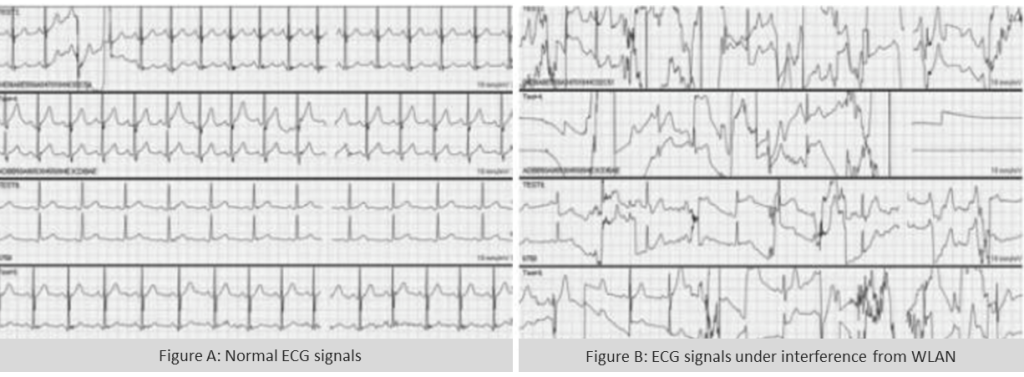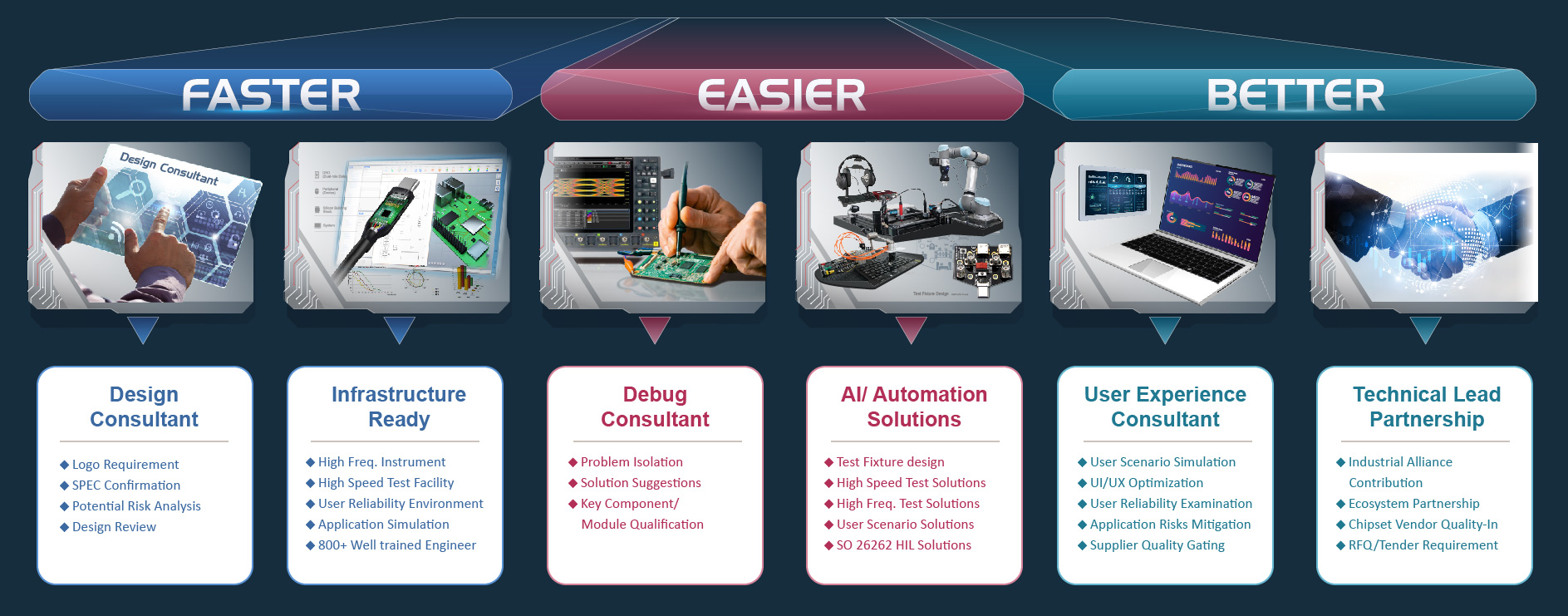As technology develops, applications for wireless technology have extended from products like mobile phones and smart home appliances to the medical industry. Wireless technology has made the medical industry more flexible and no longer limited by space. For example, with wireless networks between medical equipment, information can be transmitted to medical staff efficiently, benefitting the patients by accelerating their treatments. In addition, some traditional medical instruments need to be connected to a wire and wireless technology can make them more convenient and portable.

There are countless variations and types of medical equipment. The US Food and Drug Administration (FDA) has been paying attention to the issue of wireless signal interference between medical instruments. In various scenarios, the more wireless signals there are in the same frequency, the more impact there will be on the various wireless medical products in the same environment. A good example of this is the wireless ECG monitoring system. Figure A below shows the normal pattern of an ECG signal. After WLAN interference is introduced into the environment, the signal patterns change into that of Figure B. By comparing Figures A and B, the impact of WLAN signals becomes evident.

Different levels of interference can occur depending on the product and its functions. This is why wireless medical products are required to undergo FDA-approved signal interference testing to evaluate the potential risks and consequences of wireless interference.
4 Levels of Wireless Signal Interference for Wireless Medical Devices
Allion, a partner of various well-known wireless product manufacturers, provides wireless interference consulting services to help clients and suppliers understand the potential risks of these products. Allion’s consulting team has decades of experience in wireless interference scenarios and has divided the risks into 4 levels, A to D. The following is a detailed explanation of these levels.
Level A: Refers to when the wireless function fails or is delayed, serious injuries or death could be caused.
- Due to the bad connection quality of medical equipment, such as ECGs, EMGs, and other devices, the medical staff is unable to see a patient’s vital signs immediately.
- Failure of medical exoskeleton devices will result in abnormal joint movements, putting elderly patients at risk of falling
Level B: Refers to when the wireless function fails or is delayed, the risk of injuries or disabilities that require professional medical attention could occur.
- Defibrillators may not provide the data required to evaluate the patient’s treatment
- The ultrasound may not provide accurate images and data for a proper diagnosis
Level C: Refers to when the wireless function fails or is delayed, the risk of minor injuries could occur.
- The medical information for the IV Pump cannot be transmitted wirelessly, resulting in the medical staff being unable to control the amount
- Issues with remote-controlled hospital beds can result in abnormal movements that injure patients
Level D: Refers to when the wireless function fails or is delayed, the impact on the patient is minimal and will not cause immediate harm.
- Due to network functionality failure, the patient is unable to request water from the medical staff with the VoIP phone
- Medical devices cannot upload height and weight information to the system database through the Internet
- Wireless ultrasound scanners cannot transmit real-time images for viewing
Scenario Simulation is the Key to High-Quality Wireless Medical Equipment
Allion can help clients evaluate wireless products within medical environments. We can help find the possible signal interference sources and simulate them for repeated testing to forward the product development process. In various test scenarios, we need to look at different performance indicators for different products. Below are the basic performance indicators we recommend.
1. Efficiency
2. Delay
3. Error Rate
When wireless functions are affected due to interference, these performance indicators can help us analyze and understand the cause, eventually helping us solve the issue.

All-round Consulting Services for Wireless Medical Devices

The figure above shows Allion’s wireless interference consulting services and scenario testing process. Our team will discuss with clients and develop a customized test plan based on their product’s functions and usage scenarios. After the FDA approves the plan, the verification testing can be scheduled. After the results come out, more information and suggestions can be provided for clients if their products are confirmed to have risks of issues that need to be debugged or improved.

Faster, Easier, Better: The Most Trusted Wireless Interference Consulting Services
With Allion’s comprehensive wireless interference consulting process, there are three major advantages:
Faster
A clear test plan will integrate wireless interference testing and define usage scenarios. This can prevent clients from using random scenarios for testing that can lead to issues down the line and help them accelerate their product development process.
Easier
Allion has a complete range of testing equipment and testing environments. With our testing solutions, we can ensure each client’s certification process is qualitative, quantitative, and reproducible. Instead of spending extra time on Issue Isolation, product developers can focus on solving co-existing interference problems.
Better
With various wireless products available, Allion will also invest resources into new technology, providing clients with updated information on signal interference and helping the development of wireless medical products face future challenges.
Allion, a product verification laboratory with decades of testing experience, owns a radio wave room testing lab that can simulate various signal interference scenarios with wireless products or signal generators. This can help our clients understand the potential issues their products are facing. Allion’s rich experience in regulation requirements, application ecosystems, and potential risks can assist clients in providing consulting services for product development plans in the early stages, saving time and costs with self-learning, and launching products into the market earlier with our professional services. Our clients will be able to enjoy high-quality service that is faster, easier, and better than others, allowing your products to be launched on time.

If you have any further needs for testing, verification, or consulting services, please contact us through the online form.






































